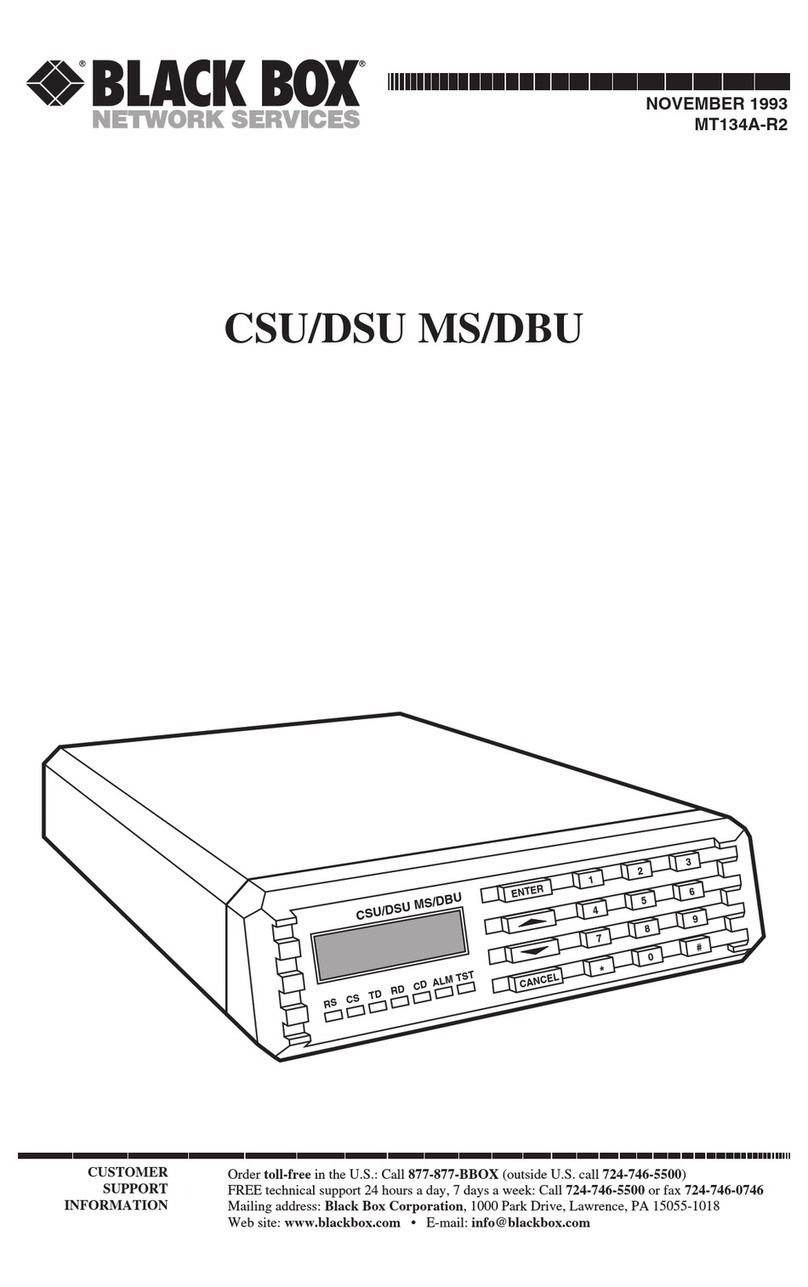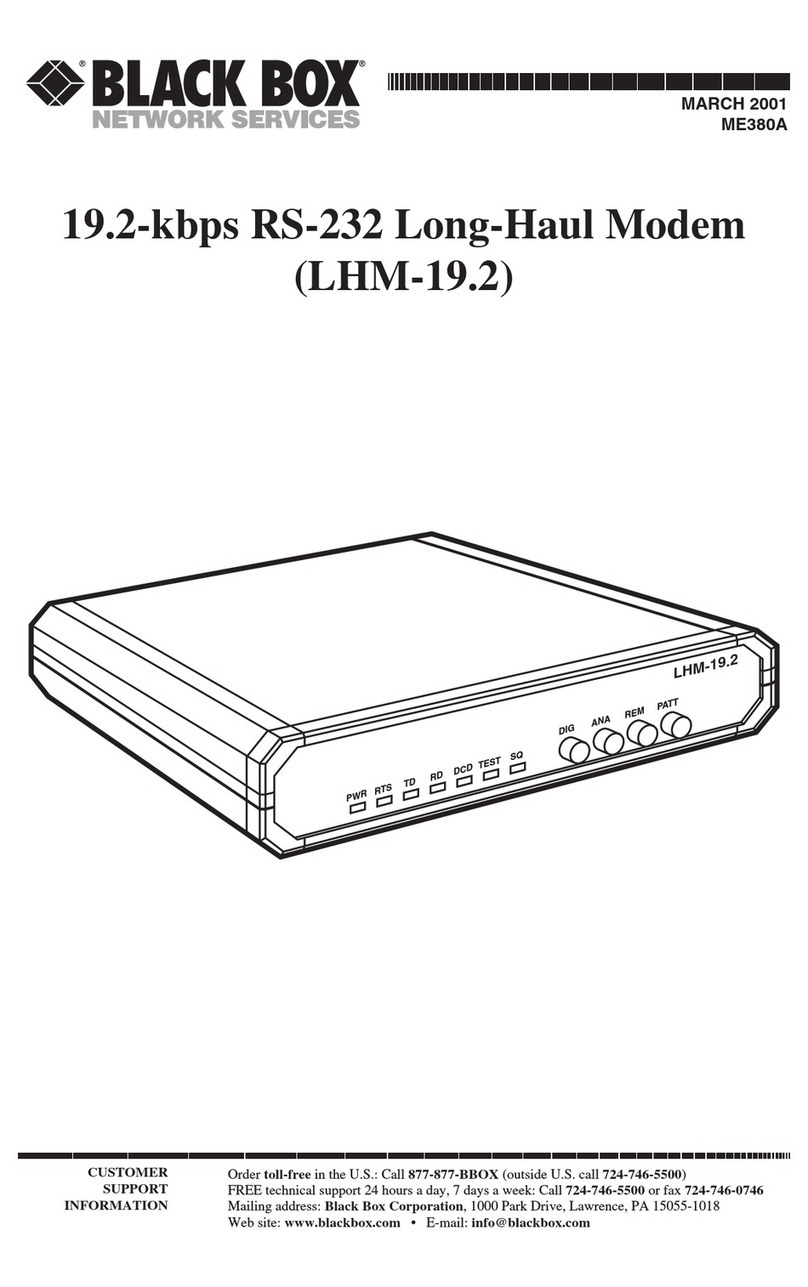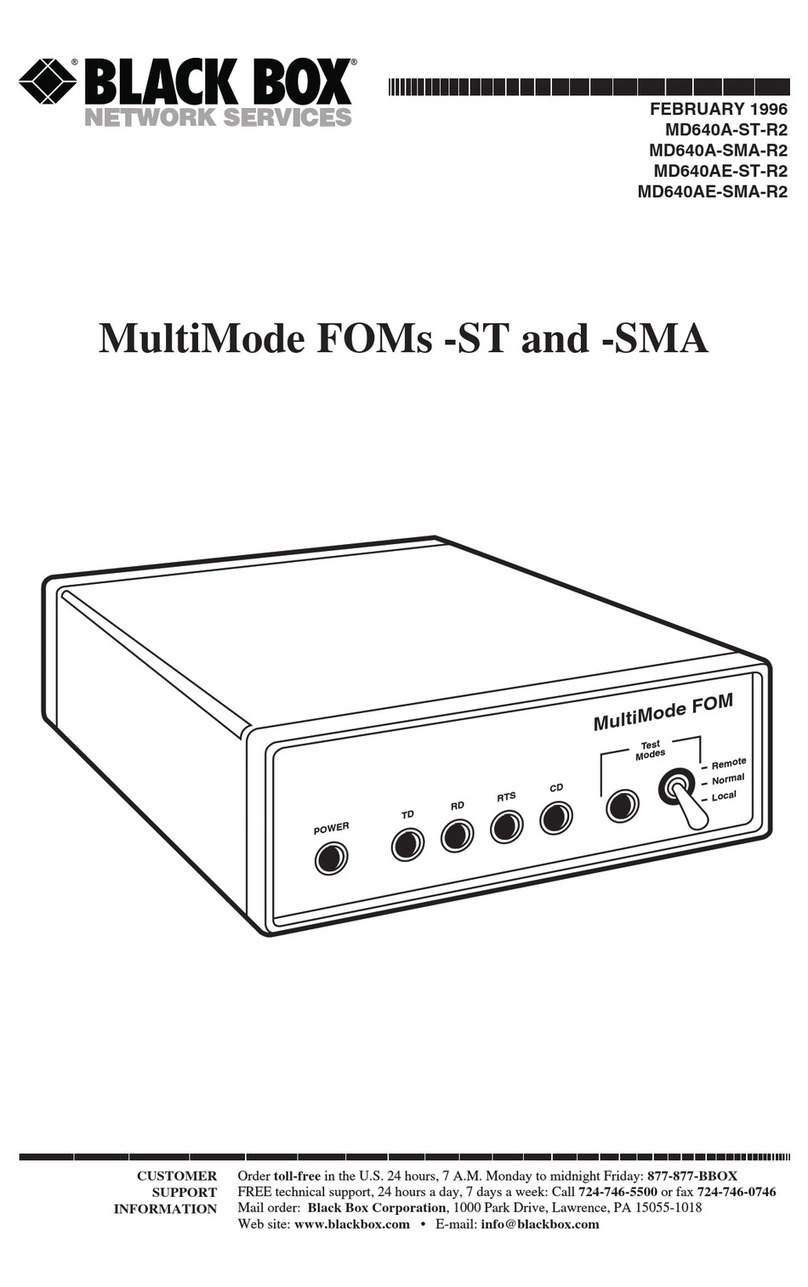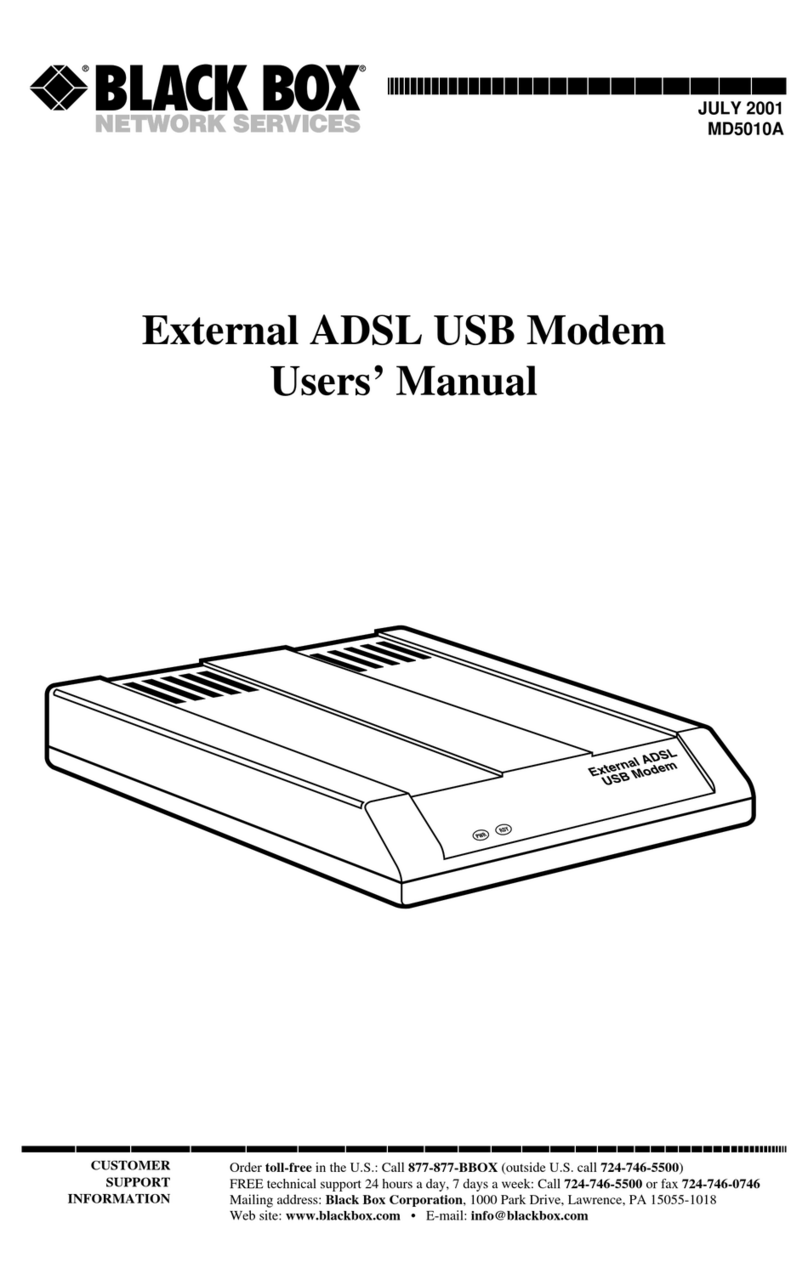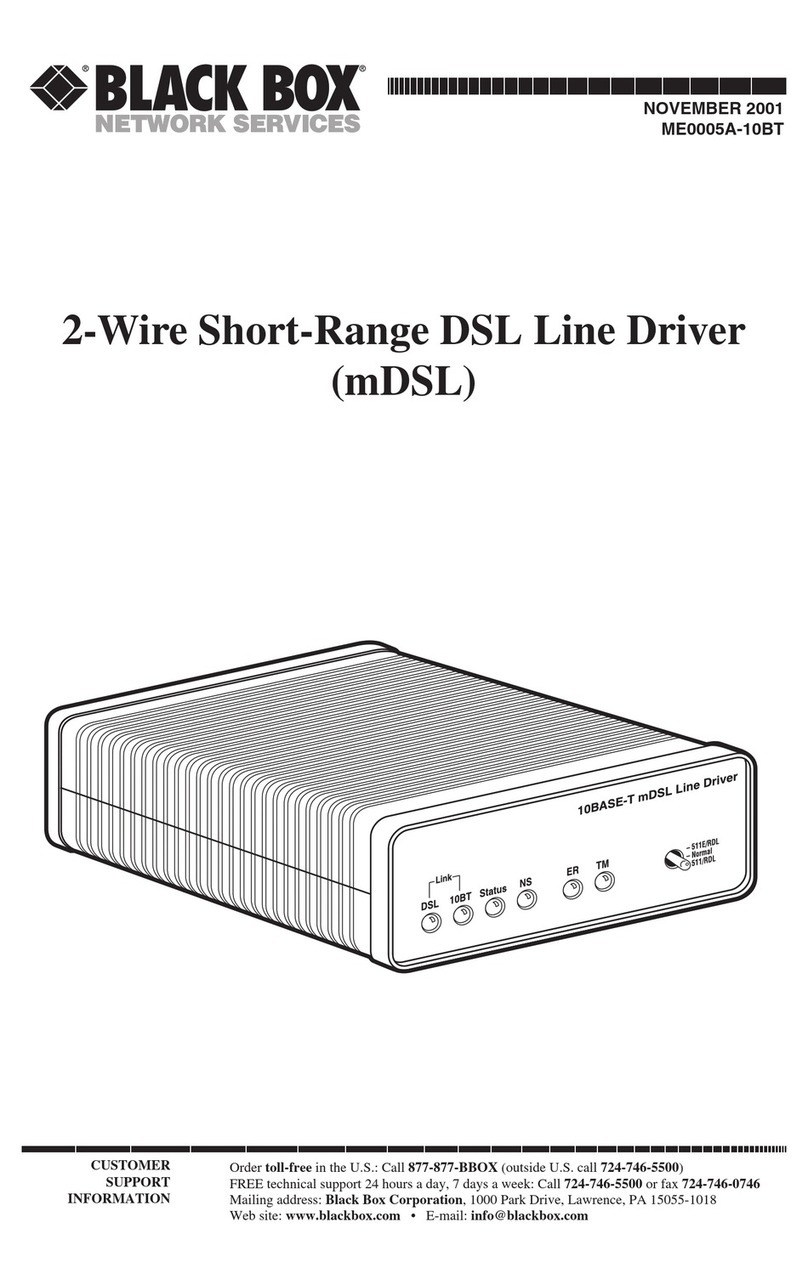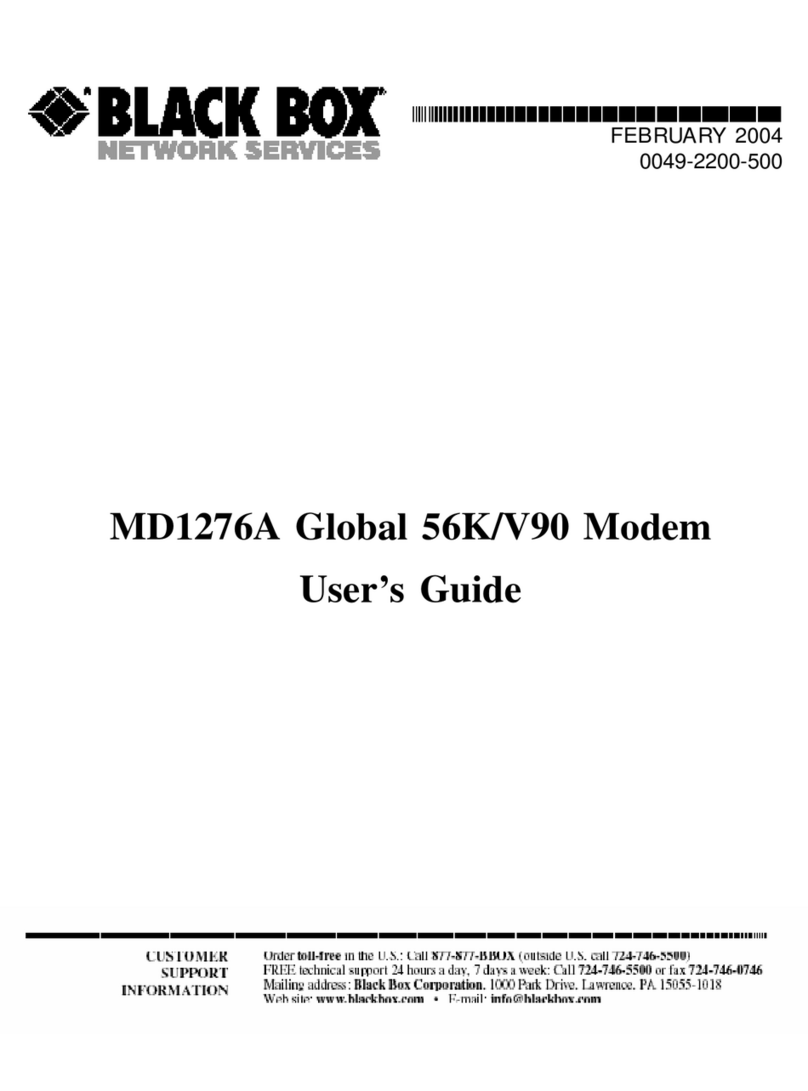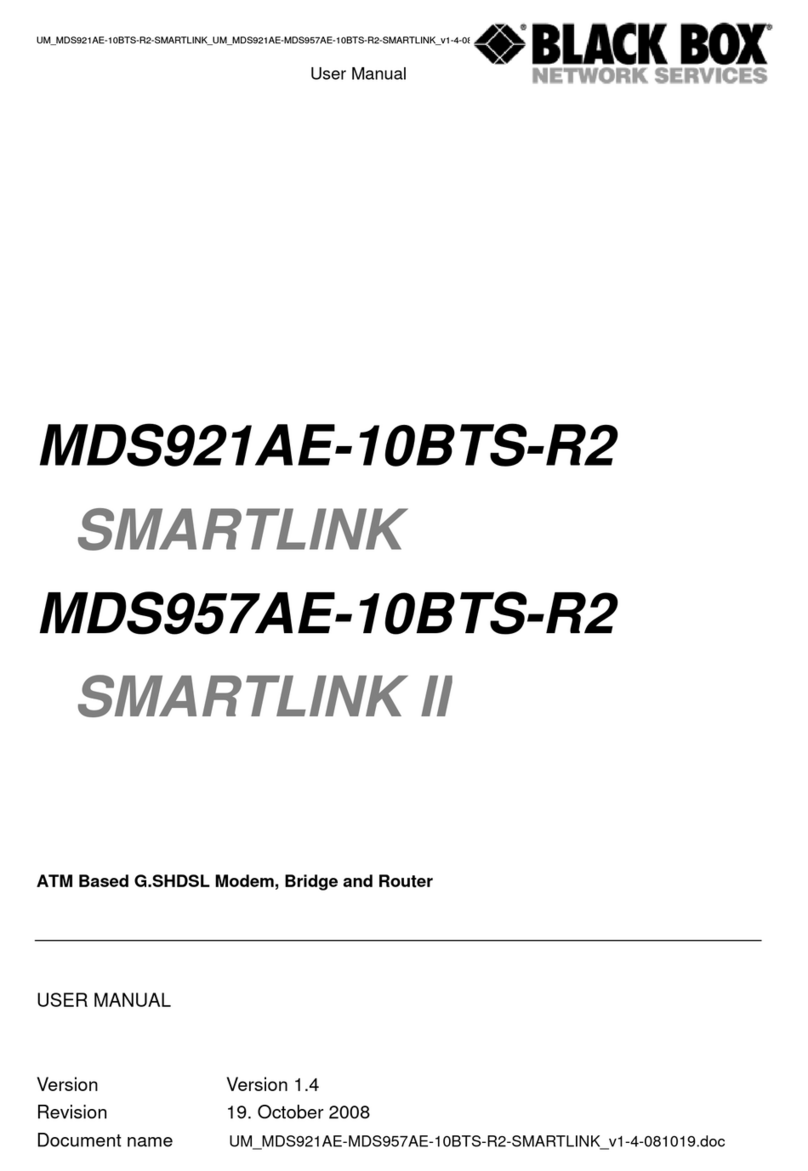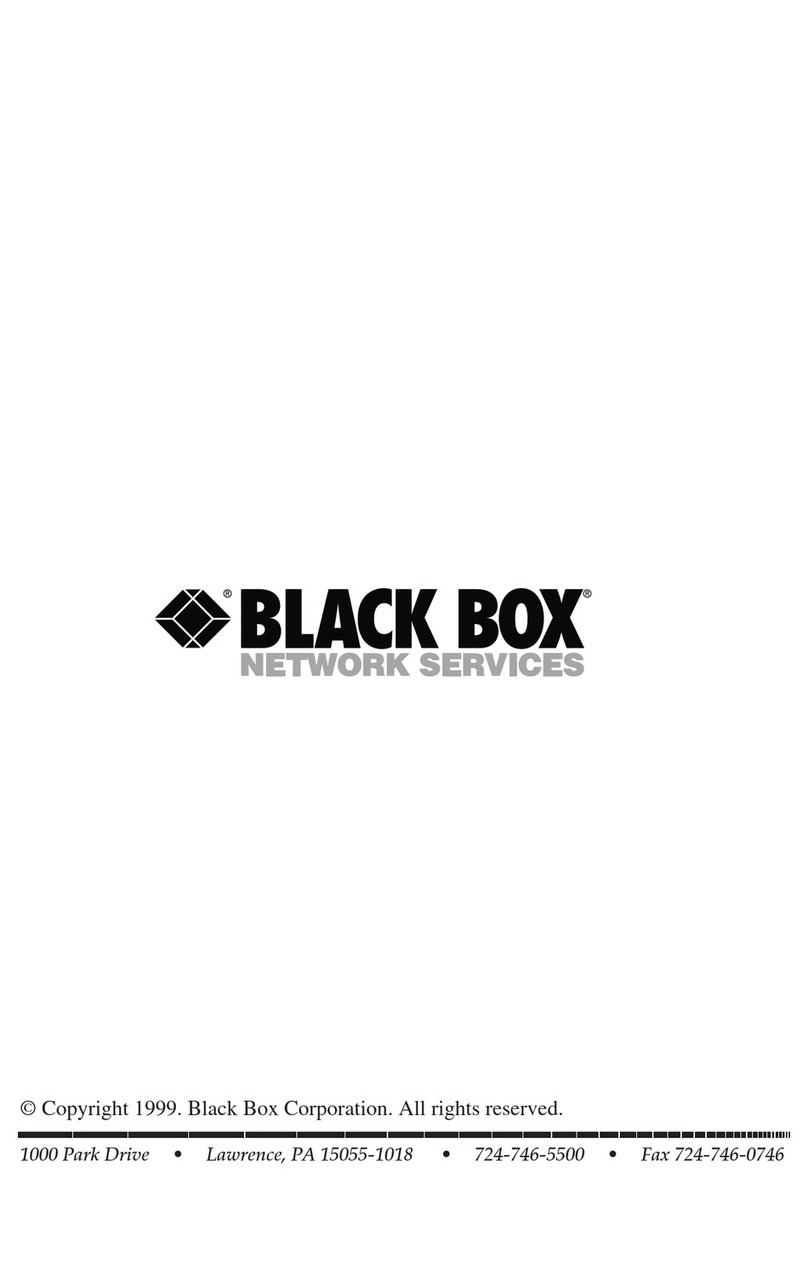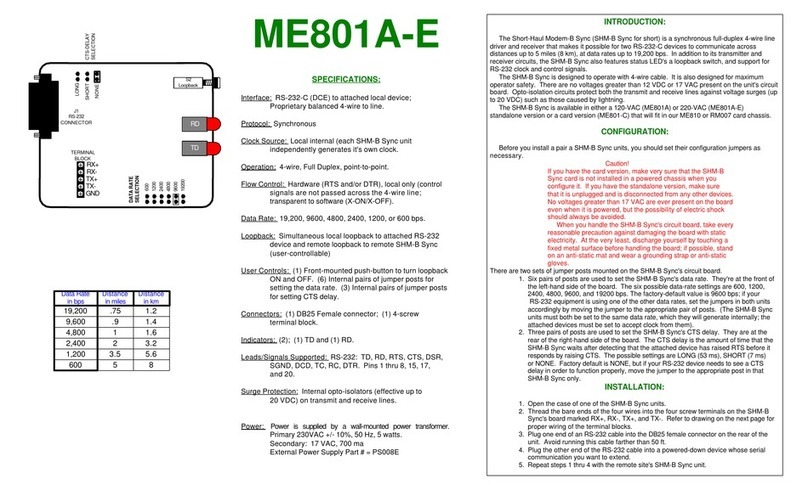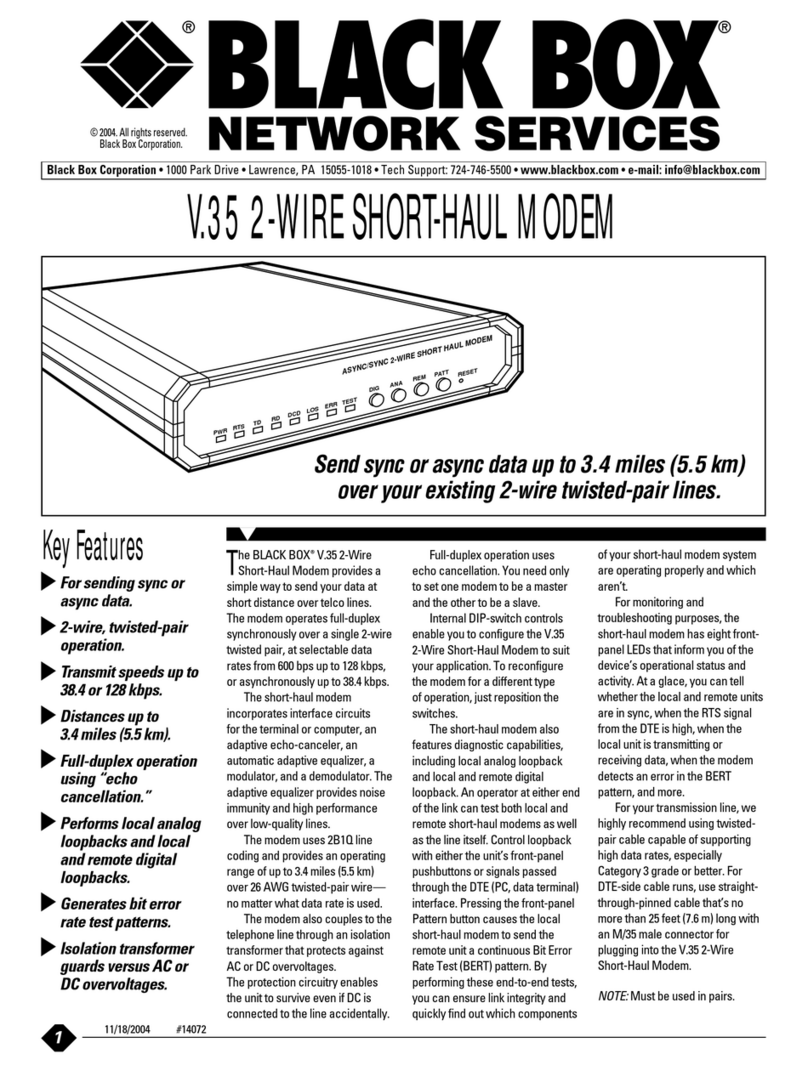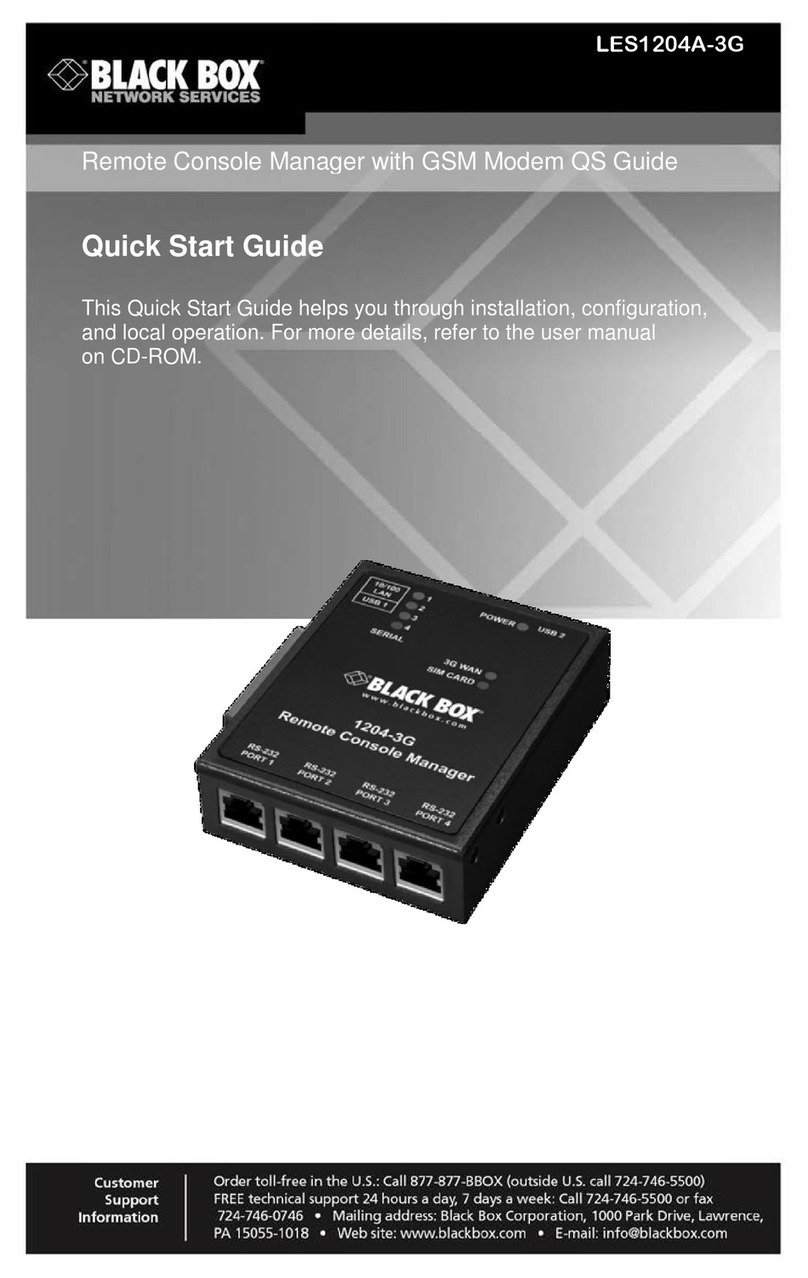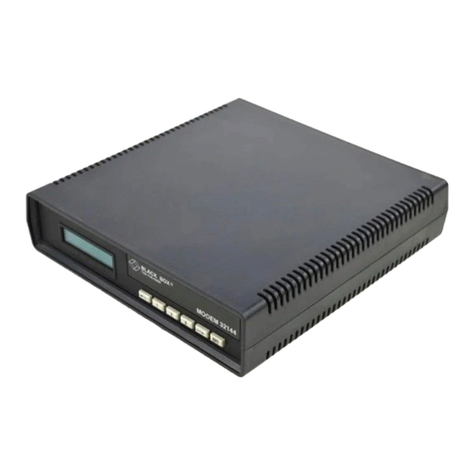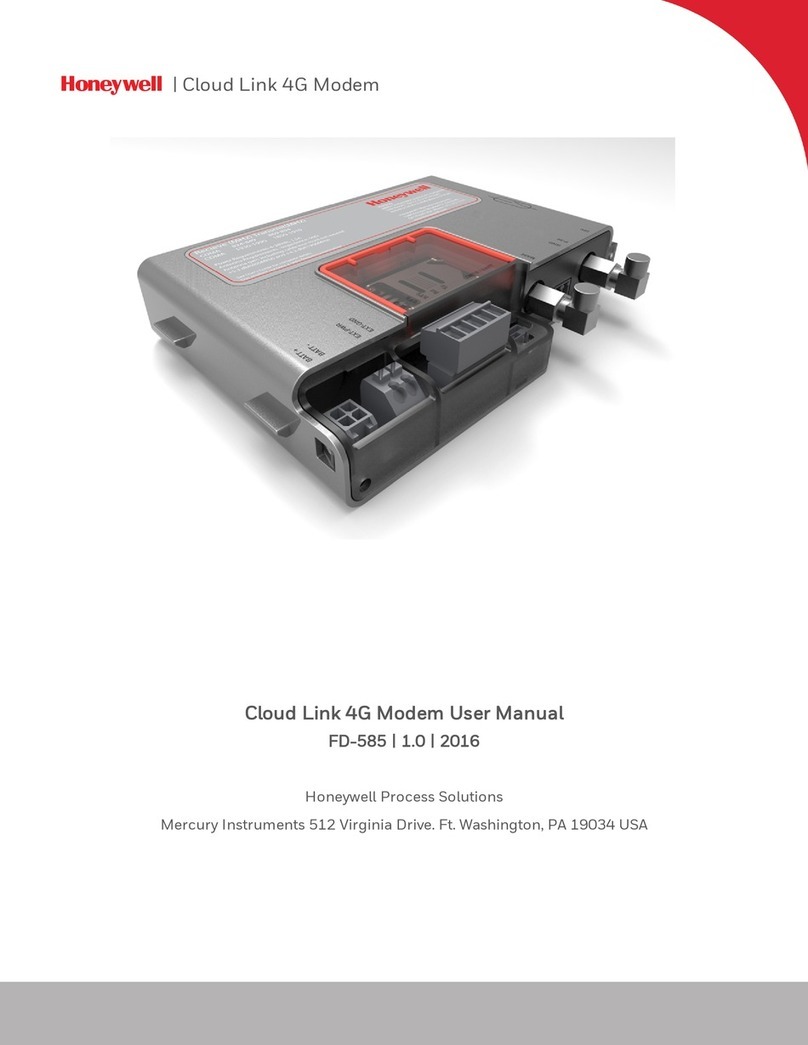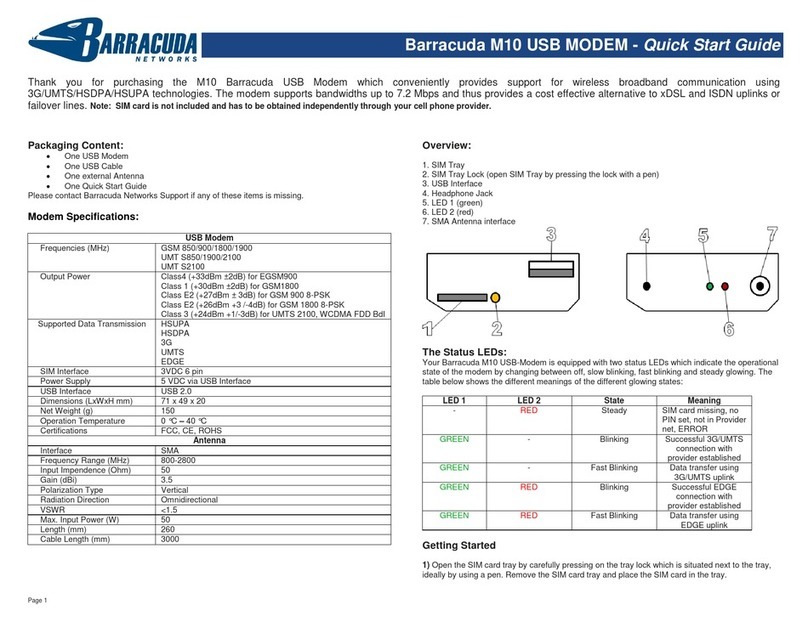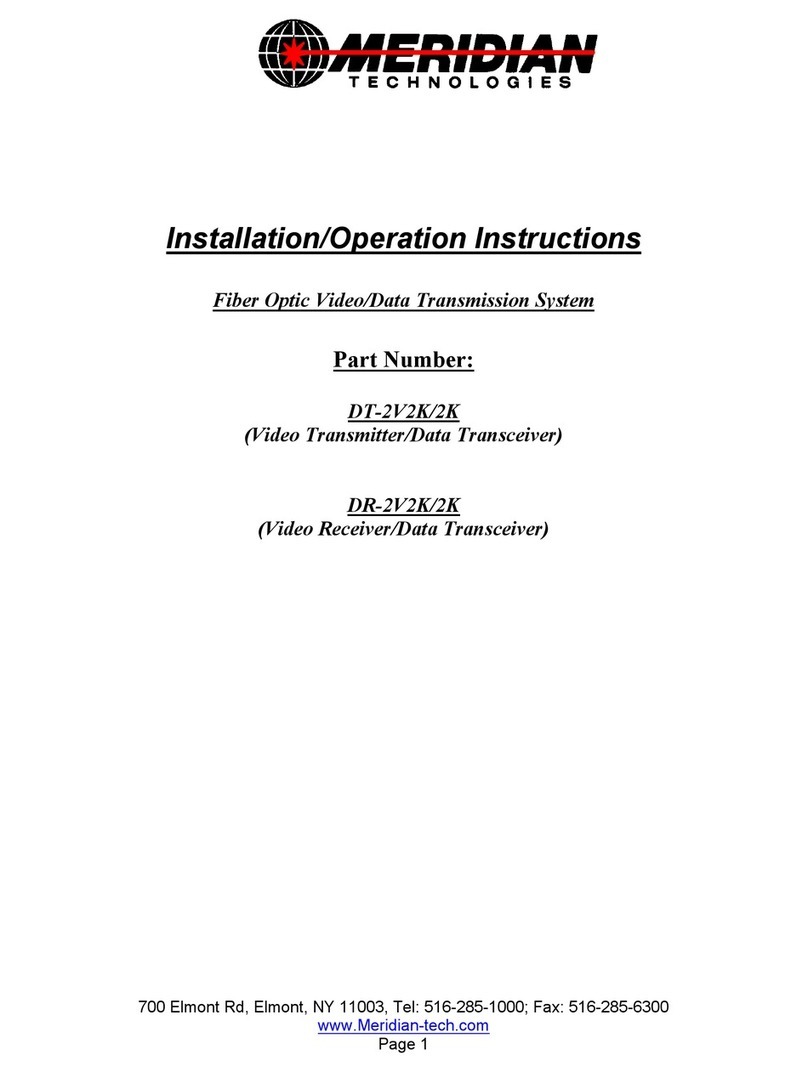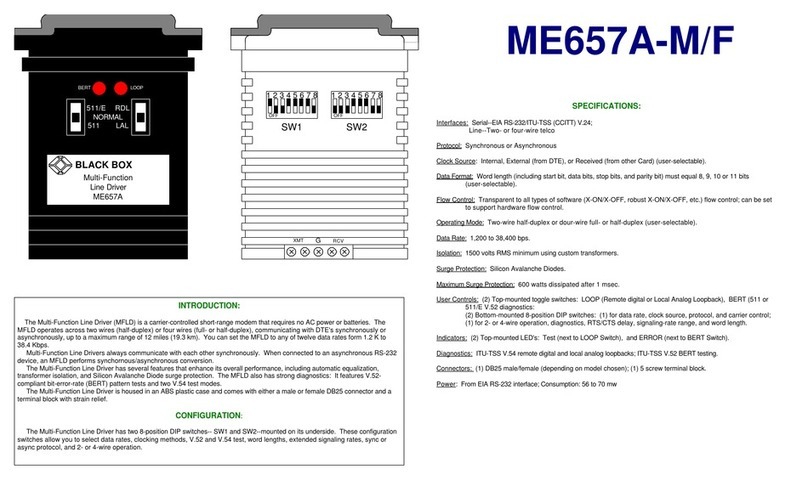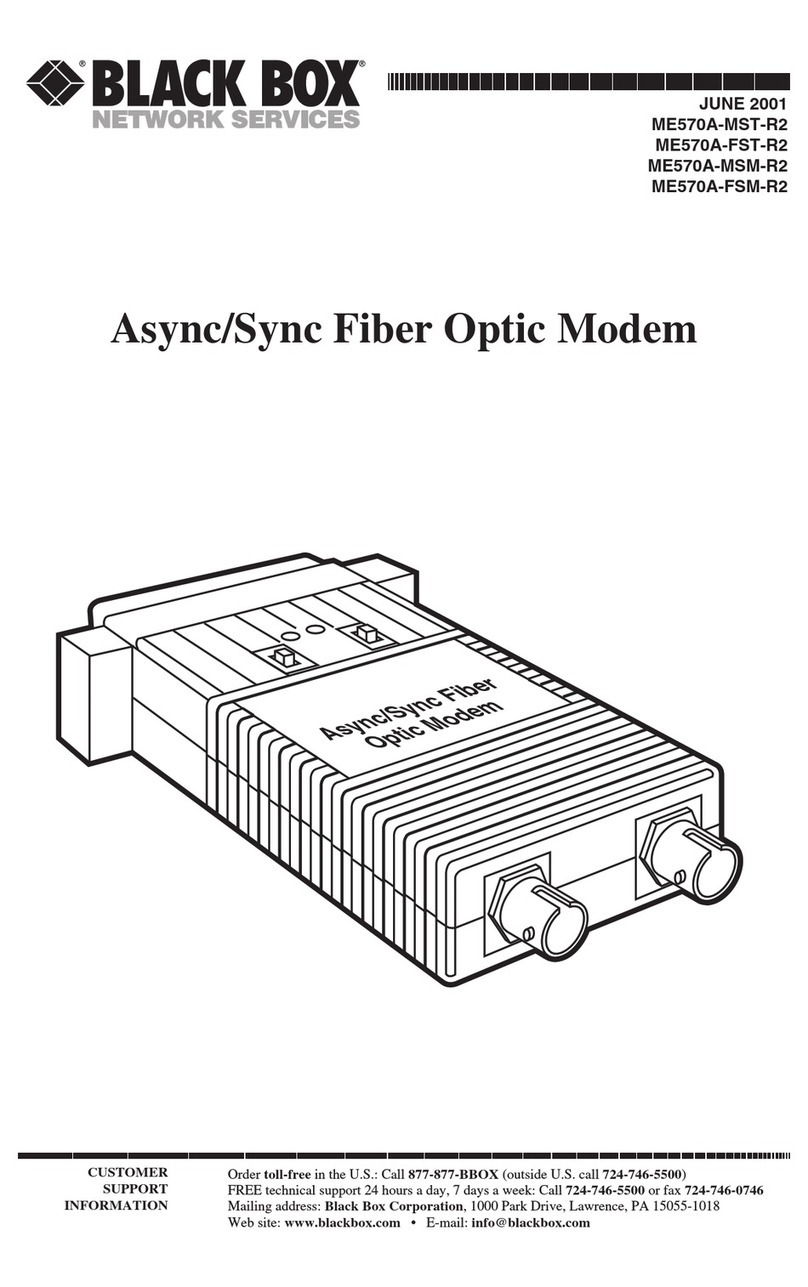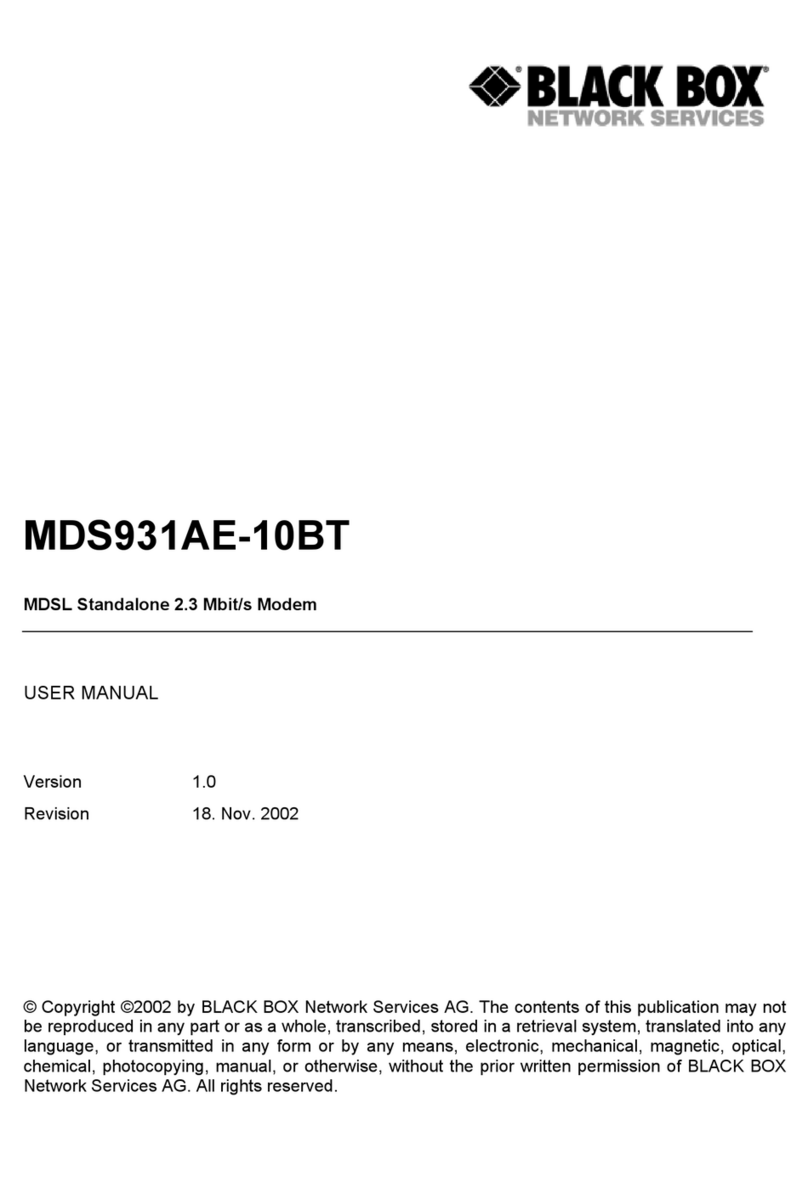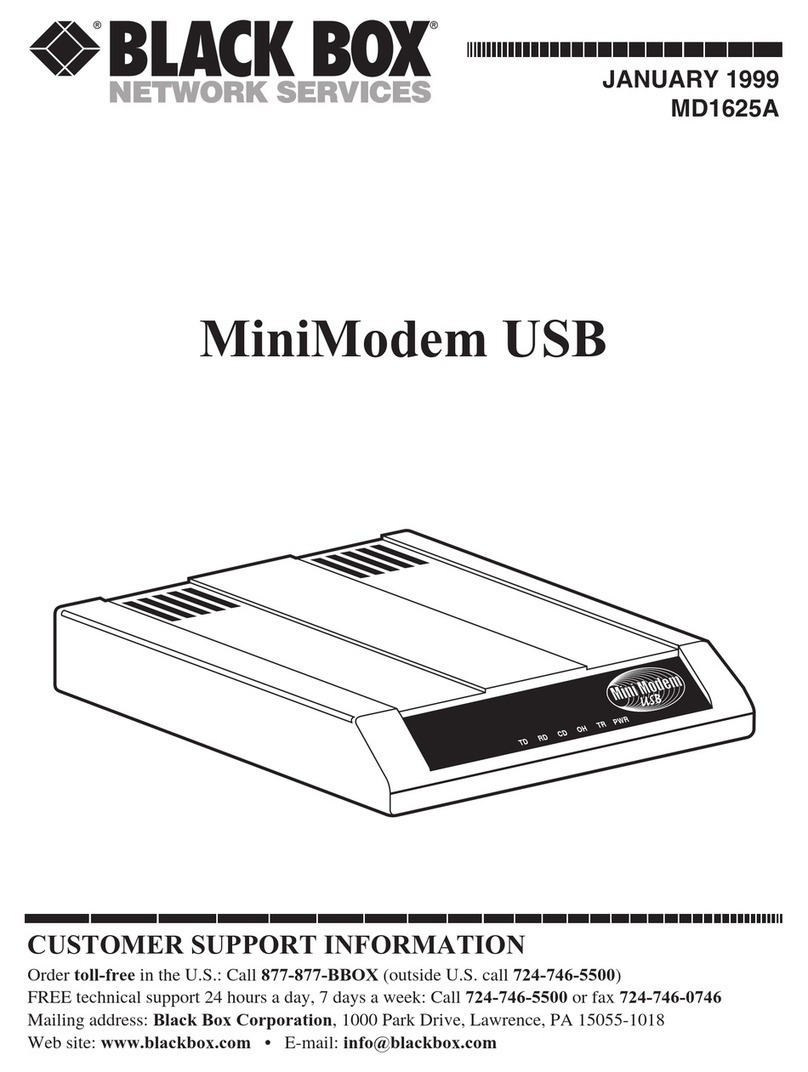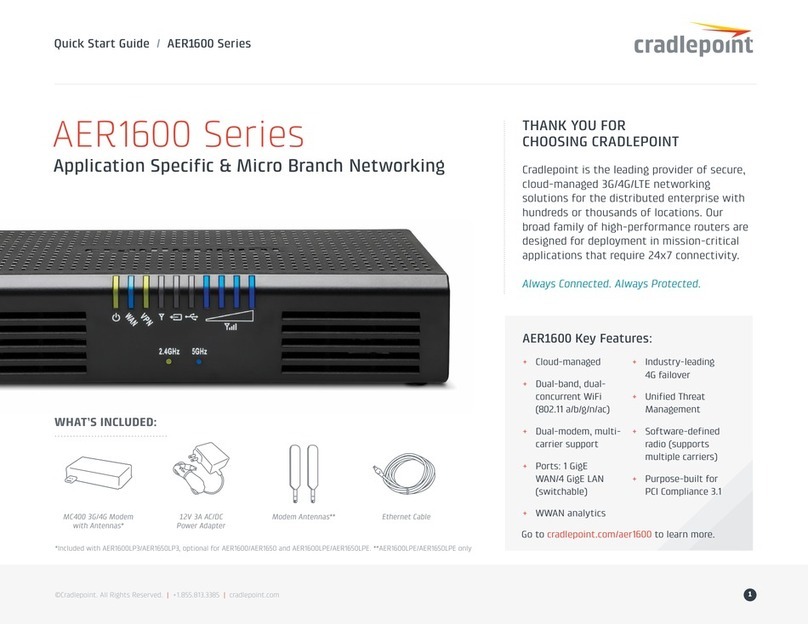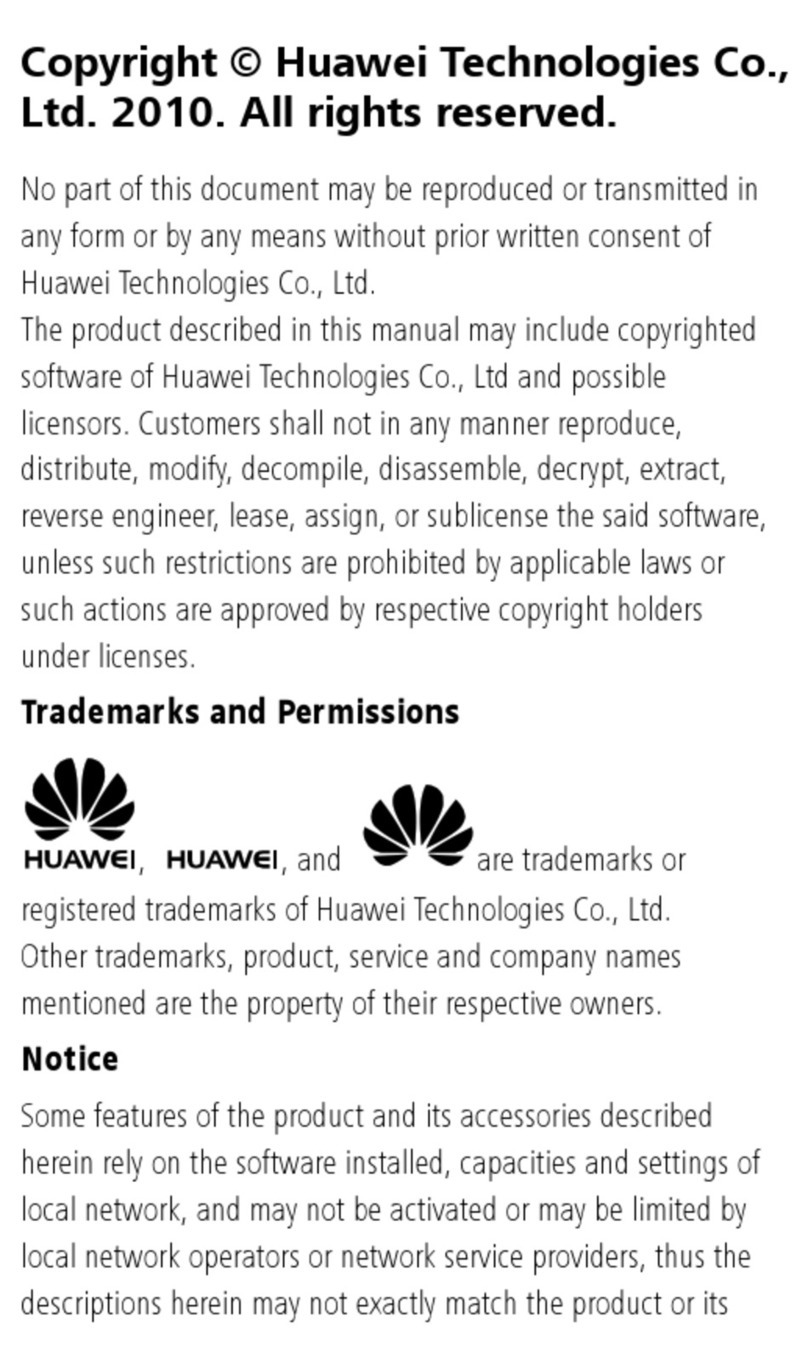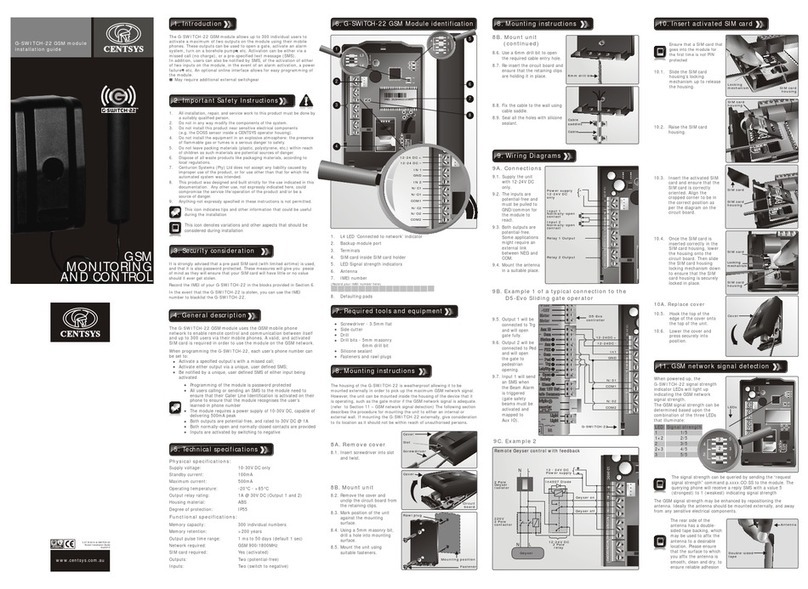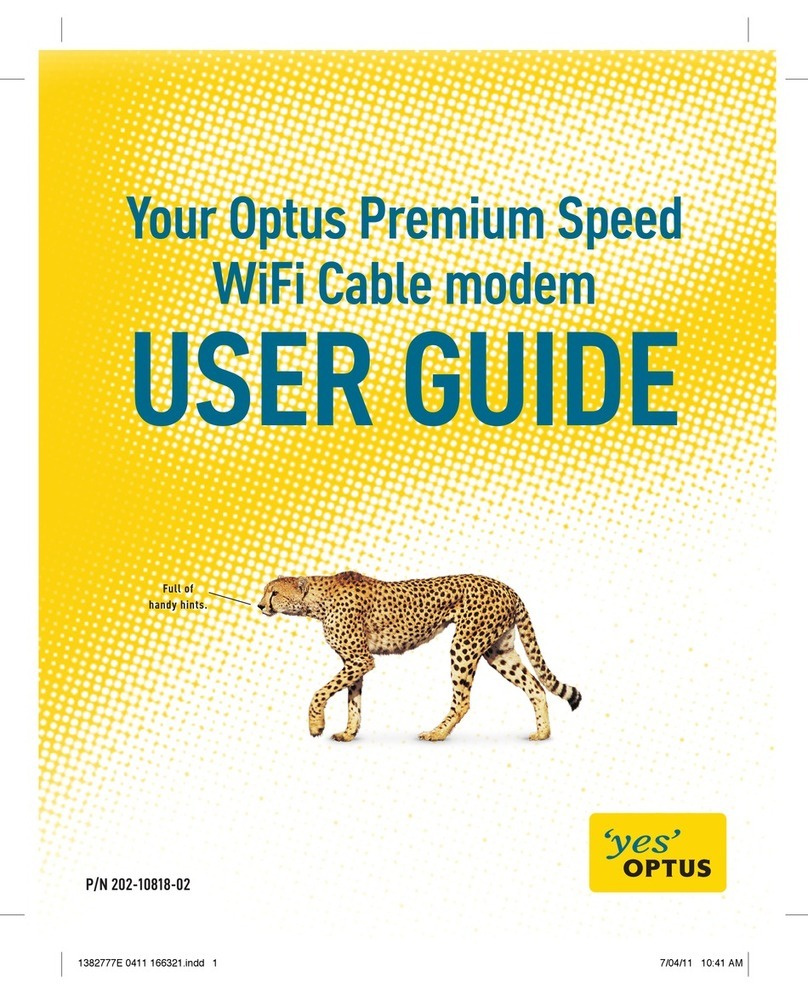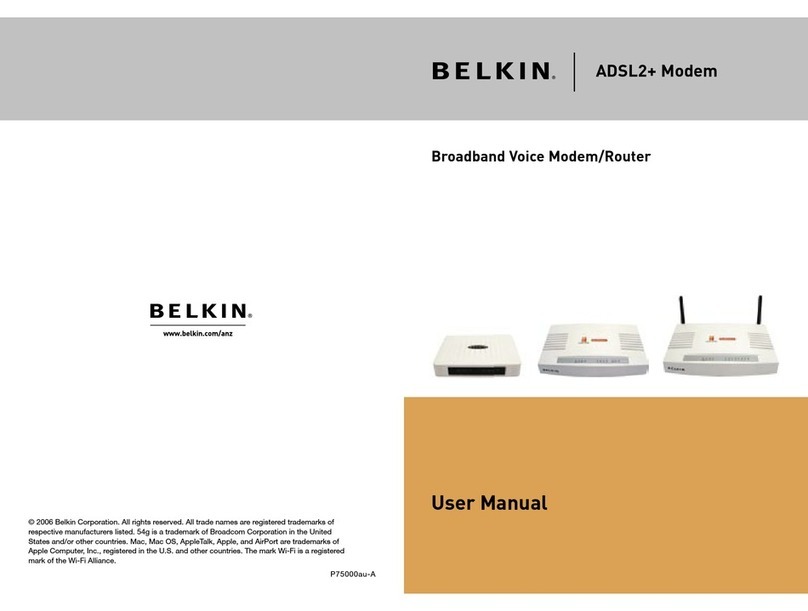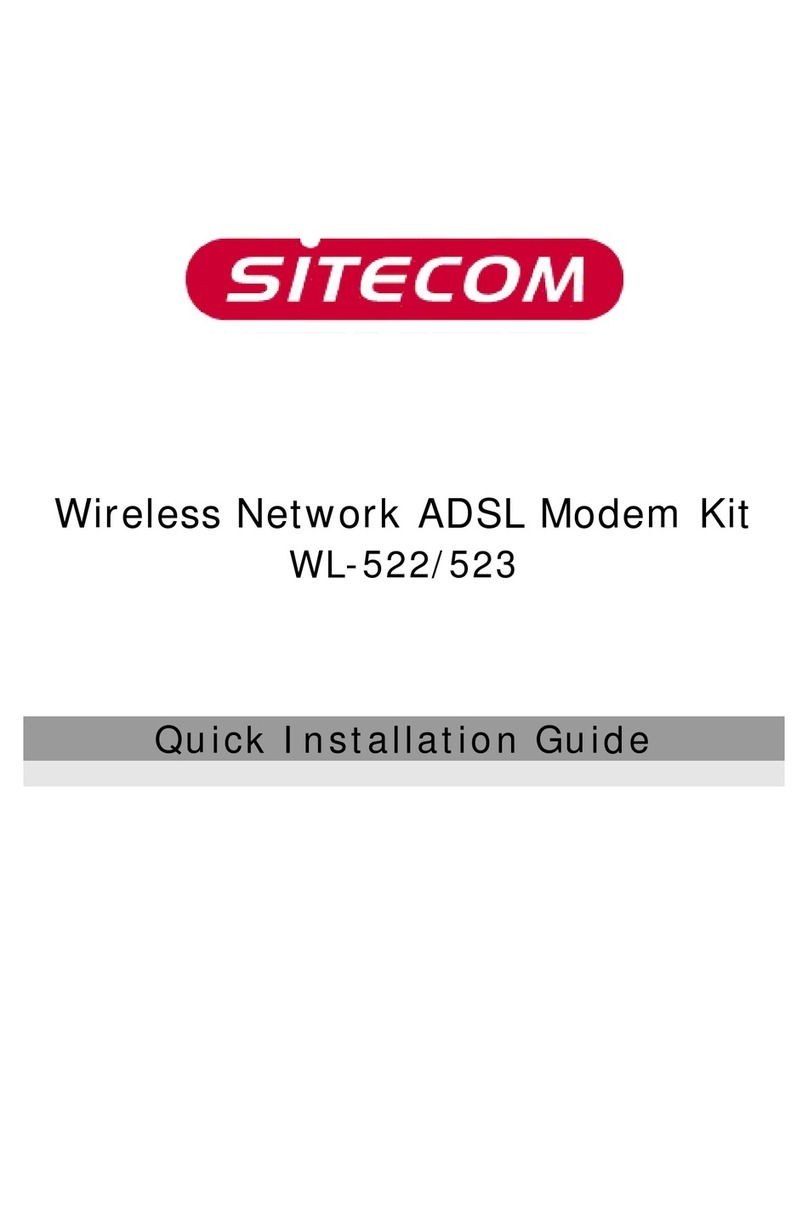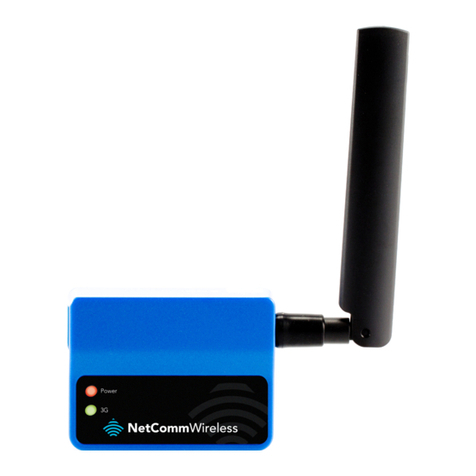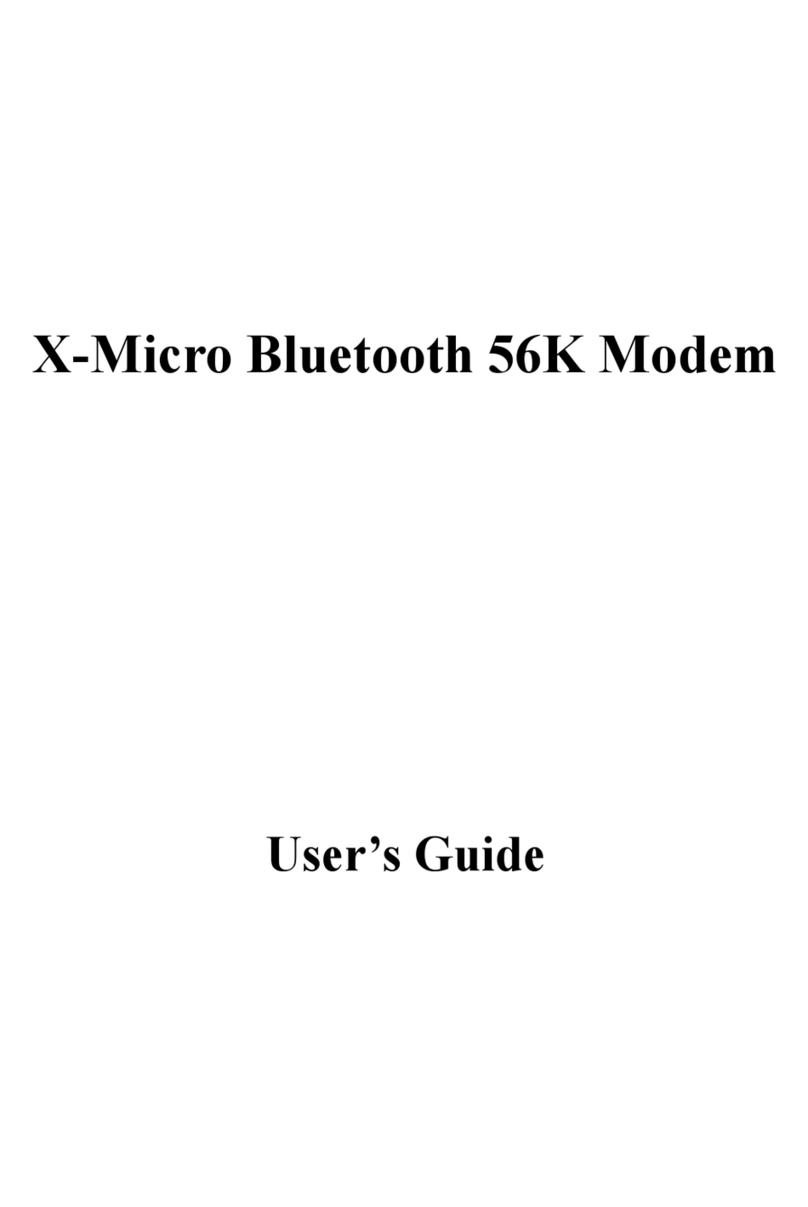1
Support EIA-530
(V.36/RS-422), X.21,
or V.35 termina
interfaces.
Sync network data
rates up to 2.048 Mbps.
Make dua coax
BNC (75-ohm) and
twisted-pair (120-ohm)
network connections.
MicroRACK Card
versions and X.21-on y
mode a so avai ab e.
Standa one mode s
feature rate adaptation
for 256 kbps, 512 kbps,
and 1.024 Mbps.
Interna , externa , and
receive oopback
c ocking.
Easy to configure with
DIP switches and
jumpers.
T
hese Micro NTUs give you
everything you need to make
G.703 connections. Depending
on the model you order, you can
easily connect ridges or routers
with RS-530, X.21, or V.35
interfaces to G.703 networks.
Best of all, the device’s
versatility in data rates and
interfaces makes it ideal for
a variety of LAN and WAN
environments. Use it three ways:
•Use the Micro NTU as a
modem. As a modem, it
sends unstructured,
synchronous 2.048-M ps
data from a G.703/E1 network
to a router, ridge, or mux.
•Use the Micro NTU as an
interface converter. In this
application, it accepts either
75-ohm (dual coax) or
120-ohm (twisted-pair)
G.703/E1 signals and
converts them so your
RS-530, X.21, or V.35
equipment can understand
them. Dual coax and modular
interfaces are located on the
NTU’s rear panel. All
interfaces are switch-
selecta le and use an HD26
connector.
A G.703 modem, interface converter,
and rate adapter in one compact device.
KeyFeatures
MICRONTUS
•Use the Micro NTU as a rate
adapter. In this application
you can use the Micro NTU
to connect a device with a
lower andwidth (256 k ps,
512 k ps, or 1.024 M ps ) to
a 2.048-M ps G.703/E1 link.
The Micro NTU operates
from internal, external, or network
(received loop) clock sources.
In addition, the device includes
loop ack diagnostics and five
front-panel LEDs for easy
monitoring.
To configure the Micro NTU,
just set the externally accessi le
DIP switches and internal
jumpers. These switches and
jumpers ena le you to set
clocking, data rate, and test
options.
Choose from standalone
or card versions. Because the
standalone model features oth
75- and 120-ohm connections,
no special adapters are needed.
The card version features
all the enefits of the standalone
unit—without the multiplexor or
V.35 capa ilities—and has a mid-
plane architecture for full hot
swappa ility. It’s availa le in two
versions: 75-ohm dual coax and
120-ohm twisted pair. The 75-
ohm model includes dual BNC
connectors and a DB15 connector
for X.21 terminal connections.
The 120-ohm model includes
a modular jack and a DB25
connector for RS-530 (V.36/
RS-422) terminal connections.
For a diagram of just one
application for the Micro NTU,
see page 2. However, a more
typical application than that is to
use the Micro NTU to connect a
ridge or router—without a native
G.703 interface—to a 2.048-M ps
G.703 network. Used this way, the
ridge or router may have an
RS-530 (V.36/RS-422), V.35, or X.21
interface, and the G.703 network
may e coax or twisted pair.
The Micro NTU can e
deployed overseas as well. It’s
CE approved, it can e used in
most European countries, and
the standalone AC models come
with switch-selecta le 115-/
230-VAC power supplies.
Black Box Corporation
• 1000 Park Drive • Lawrence, PA 15055-1018 • Tech Support: 724-746-5500 • www.blackbox.com • e-mail
[email protected]© 2005. All rights reserved.
Black Box Corporation.
5/31/2005 #15970
